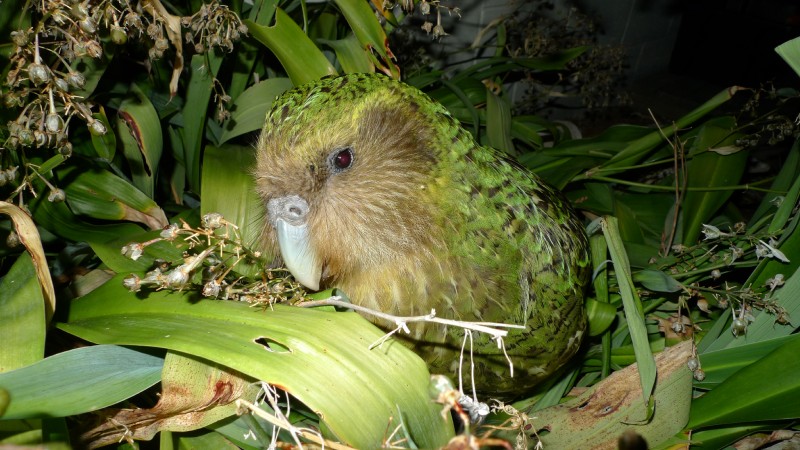Kakapo Facts
- This astounding avian most frequently goes by the simple common name of the Kakapo. It does have other alternate names, however. These alternate terms happen, in fact, to be more descriptive. They include the night parrot and the owl parrot.
- Professional researchers, though, typically refer to the amazing animal by its formal scientific name. That’s the tongue-twisiting term of the Strigops habroptilus. Regardless of which name one uses, though, it’s a truly fascinating work of Nature.
- The highly respected English researcher, George Robert Gray, made the first formal recognition of the creature as a separate and distinct species. This scientifically noteworthy deed he further accomplished due to his research, in the year 1845.
- Regrettably, this truly remarkable bird now sadly finds itself facing serious threats to its continued existence as a species. Its greatest threats include habitat loss, climate change, and also non-indigenous predators, such as cats, ferrets, rats, and stoats.
- Due to these various depredations, the known population of the remarkable Kakapo only totaled 148 extant individuals, as of April 2018. For this reason, among others, the IUCN now lists the amazing bird species as Critically Endangered.
Related Articles
Kakapo Physical Description
The mesmerizing Kakapo almost instantly captivates those few fortunate enough to encounter one. That’s especially true in the wild. Its many incredible qualities have additionally served to create a certain mystique around the bird, in some areas and circles.
Perhaps the most notable fact about the truly impressive bird, somewhat surprisingly, continues to be its physical size. That’s because this fascinating animal ranks as rather small, compared to some of the other 60-odd species of flightless birds throughout the world.
This avian resembles a rather rotund parrot. The species also presents a moderate degree of sexual dimorphism. The larger males average about 4.4 lb (2 kg) in weight. Meanwhile, the smaller, and only slightly less rotund, females only average about 3.3 lb (1.5 kg).
In coloring, the Kakapo typically presents a striking combination of yellowish-green colors. This appears mottled with brownish gray or black on the upper side. The flank and breast also tend to have the same background colors, but the mottling consists of yellow.
- Kingdom: Animalia
- Phylum: Chordata
- Class: Aves
- Order: Psittaciformes
- Family: Strigopidae
- Genus: Strigops
- Species: S. habroptila
Kakapo Distribution, Habitat, and Ecology
Unfortunately, the incredible Kakapo evolved as native solely to an extremely restricted habitat range across the globe. Given its distinctiveness, the precise zone of habitation it possesses probably won’t surprise many people. Nature blessed the entire region.
In fact, it only lives in what now forms the island nation of New Zealand. Geographically situated near Australia, this large island country seves as home to an extraordinary array of remarkable species. Currently, it only exists on three islands kept free of predators.
The tiny avian does, however, display impressive adaptability. That holds true because, in its native habitat, the avian inhabits a multitude of environments. These vary, of course, but most often include forests, scrublands, grasslands, and also coastal areas.
Although it adapts well in regards to it range, it still maintains certain behavior patterns, though. As a result, the flightless bird primarily lives and feeds in a nocturnal manner. During the day it most commonly prefers to roost under various forms of cover.
Yet this wonder of evolution doesn’t let its grounded state slow it down, however. While the Kakapo remains incapable of light, it adapted into an extremely accomplished climber. The amazing creature uses this highly useful skill to find its food in the trees.
The impressive bird also differentiates itself from its fellows in yet one more manner. That’s due to the surprisng fact that, unlike most other birds, this species remains entirely herbivorous. It usually feeds on a variety of seeds, leaves, fruits, and stems.
Species Sharing Its Range
Check out our other articles on 7 Spectacular Geological Marvels of Europe, Purple Frog, Caddo Lake, Mary River Turtle, Happy Alien, Cecropia Moth, Spinner Shark, Little Penguin

